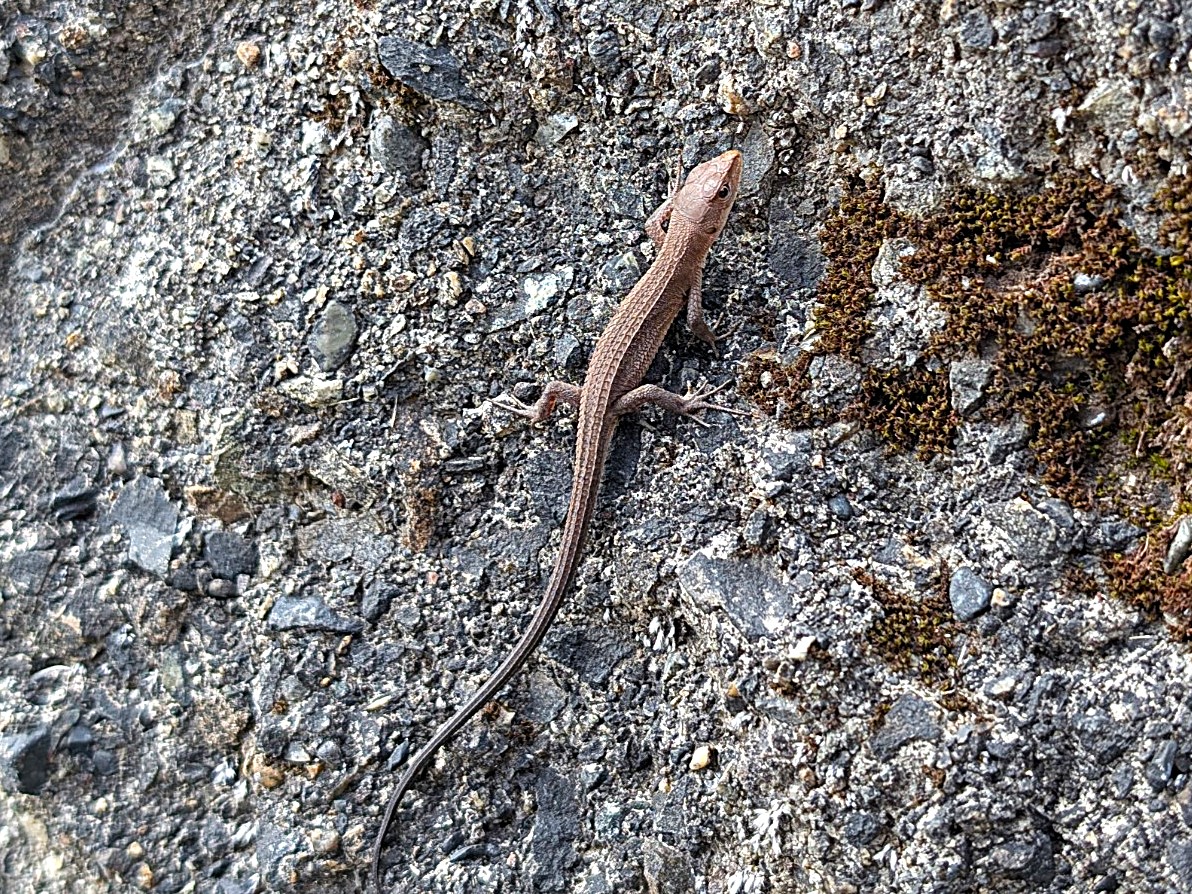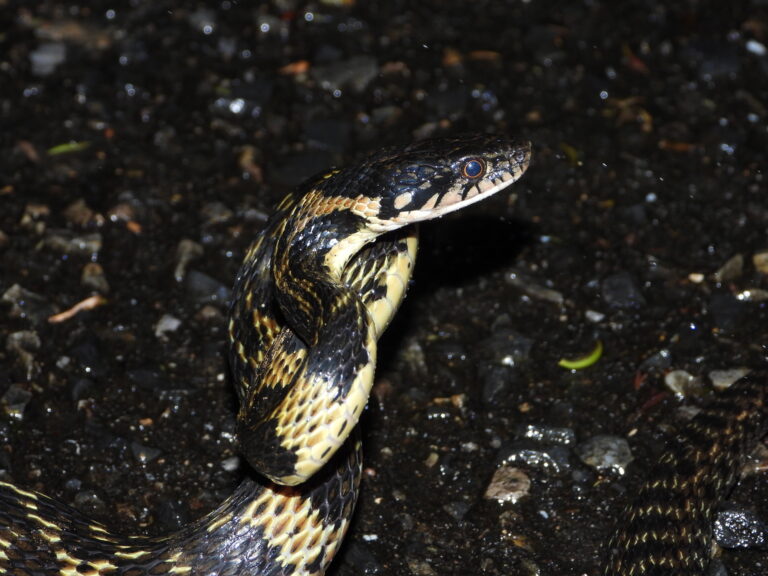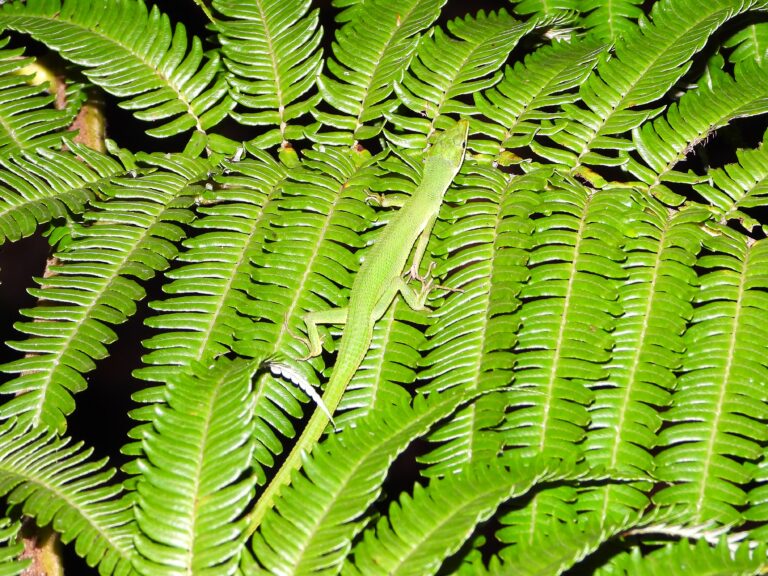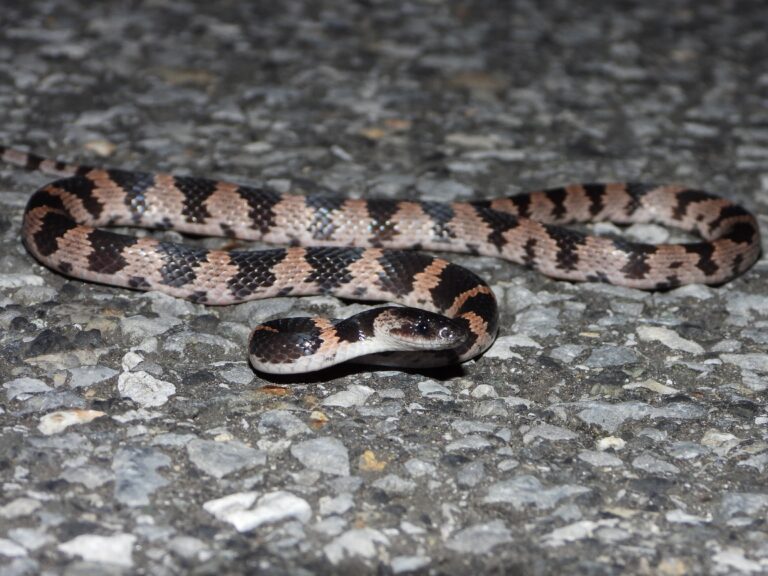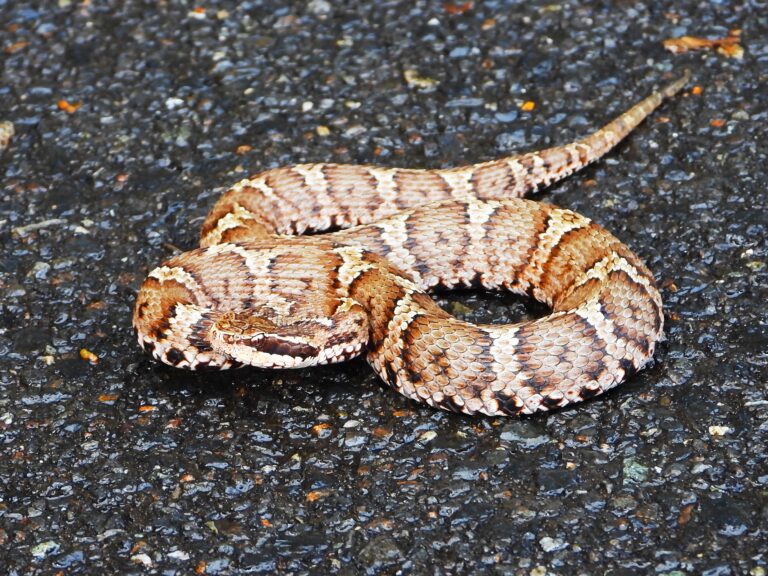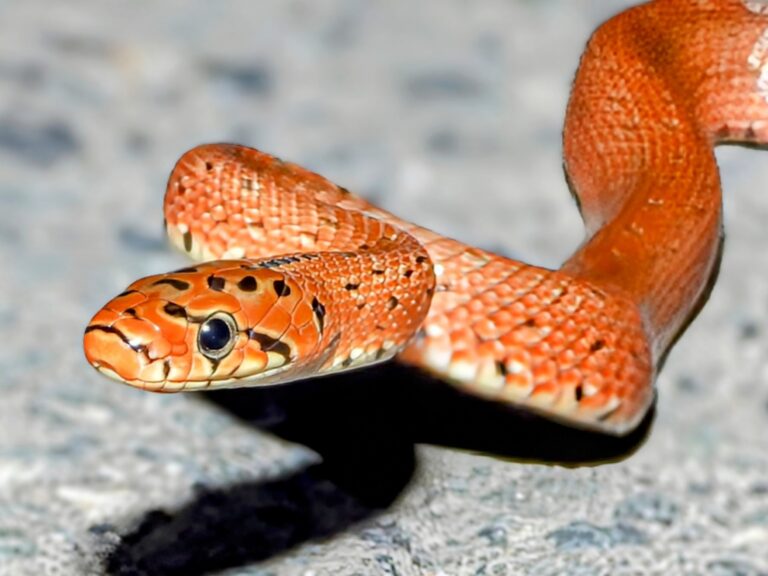Japanese Grass Lizard (Takydromus tachydromoides) – Wildlife of Japan
Introduction
The Japanese grass lizard, known locally as kanahebi, is a slender and agile reptile native to Japan. It is one of the most familiar wild reptiles, often seen basking in the sun on garden walls or dashing through the grass. Despite its name containing “hebi” (snake), this harmless lizard plays an important ecological role close to human life.
Appearance
The Japanese grass lizard has a remarkably long tail—often more than twice the length of its body. The total length is typically 16–27 cm, including the tail. Its coloration ranges from brown to olive, with a darker stripe running from the eye toward the flank and sometimes a pale line below it. The scales are rough and matte, not glossy like those of skinks, and the body is slim with long limbs that help it move swiftly through vegetation and narrow crevices.
Habitat & Distribution
This species is found across Japan’s four main islands—Hokkaido, Honshu, Shikoku, and Kyushu—as well as several smaller islands including Yakushima, Tanegashima, and Nakanoshima. It inhabits sunny lowland grasslands, shrubs, forest edges, riverbanks, parks, and even residential gardens. Kanahebi thrive in environments that offer both open basking spots and nearby vegetation for quick retreats.
Behavior
Japanese grass lizards are diurnal, meaning they are active during the daytime. They often bask on rocks or fences to regulate body temperature and retreat to shade when overheated. When threatened, they perform tail autotomy, shedding their tail to distract predators; the tail later regenerates, though the new one lacks bone. Some individuals also display “arm-waving” gestures, possibly as a form of communication or territorial display. Their speed and agility make them highly successful in escaping danger.
Diet
Kanahebi are insectivorous and feed mainly on small arthropods such as insects, spiders, and woodlice. They actively hunt by moving through grass or under leaves, making sudden strikes at moving prey. Studies indicate they contribute to natural pest control by keeping insect populations balanced within local ecosystems.
Reproduction
This species is oviparous, laying eggs in spring and summer. Females deposit clutches in humid, sheltered places such as under grass roots or leaf litter. Embryological research shows about 17 developmental stages between laying and hatching under 28 °C conditions, with hatching occurring after roughly 30 days. The hatchlings emerge as miniature adults, already capable of moving and feeding independently.
Conservation
The Japanese grass lizard is common and classified as “Least Concern” by the IUCN. However, local populations may be affected by habitat loss, fragmentation, and declines in insect prey due to pesticide use. Although specific studies on threats are limited, domestic cats and road mortality are also potential pressures in suburban areas. Maintaining green spaces, reducing chemical use, and improving public awareness can help sustain healthy populations.
Author’s Impression
Kanahebi are among the easiest reptiles to encounter in Japan. I often see them basking on warm stones, disappearing in a flash when I get too close. Their long tails and quick reflexes make even an ordinary backyard feel alive. Watching one hunt for insects under the sunlight is a simple but wonderful reminder that wild nature still exists right beside us.

